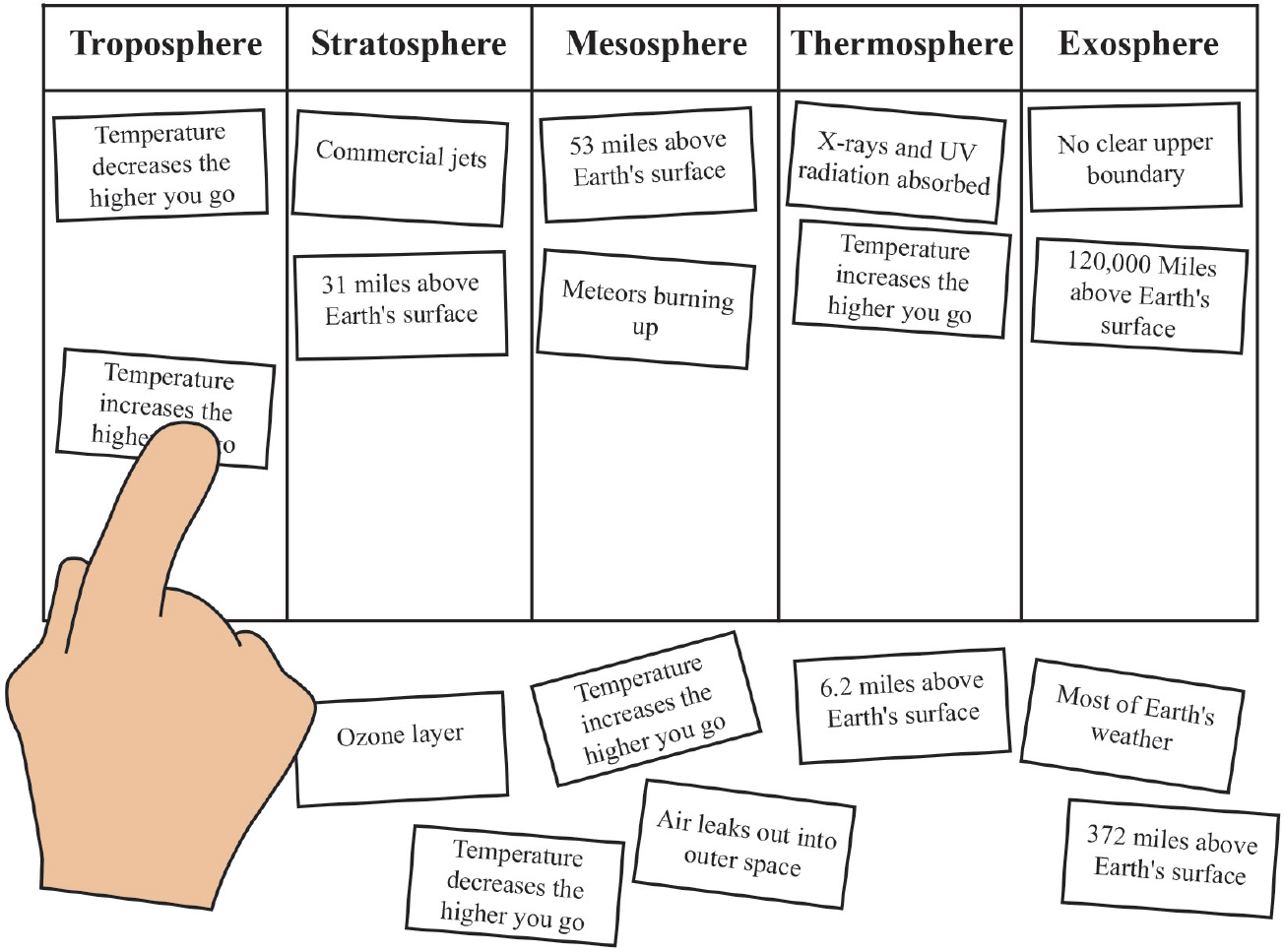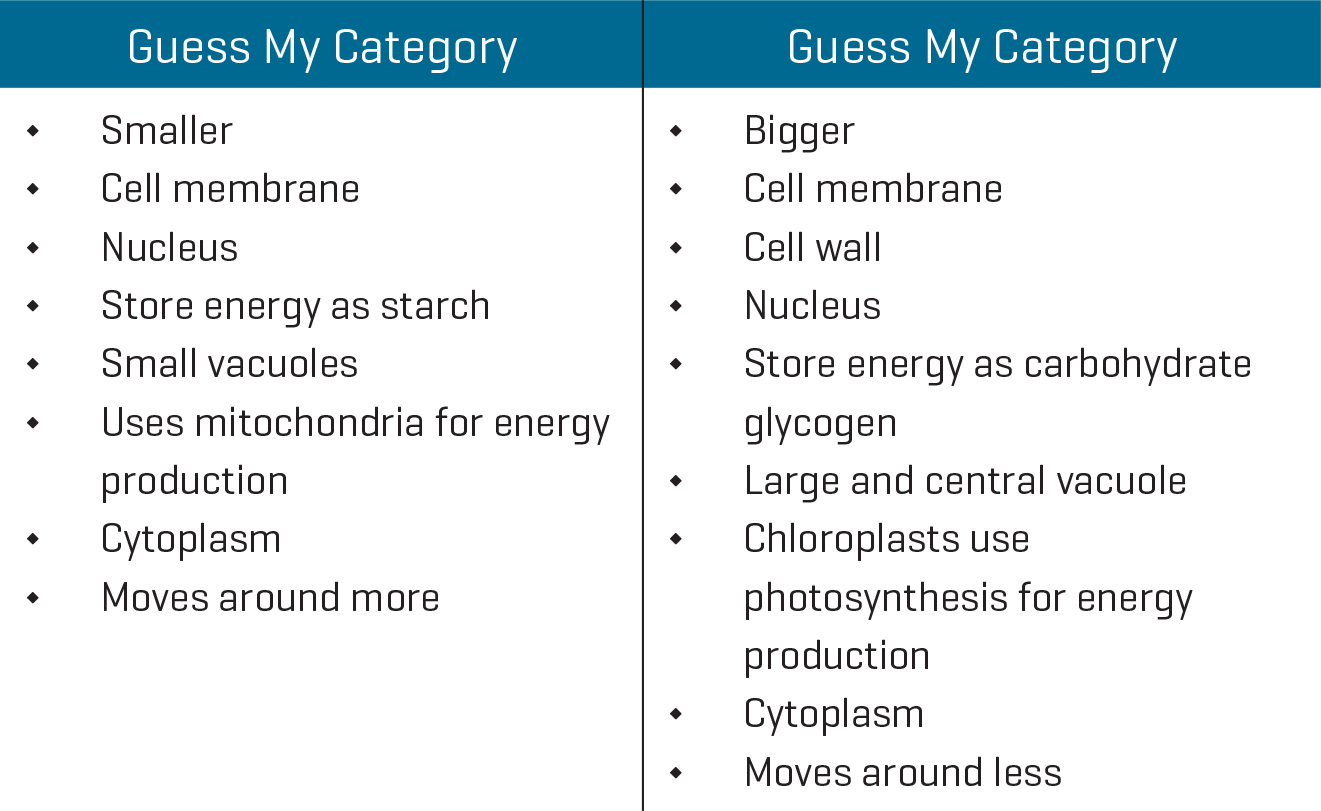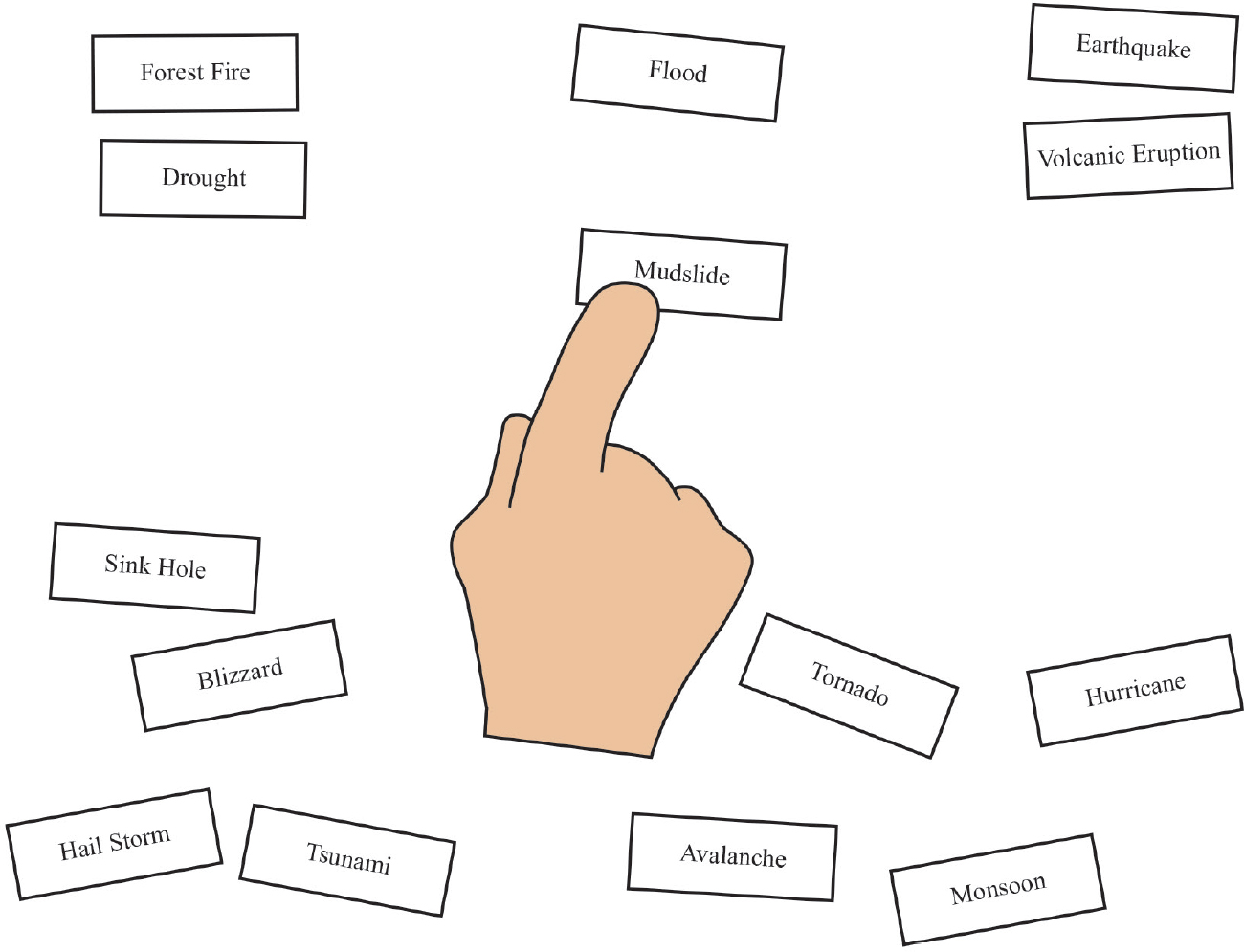Teacher's Toolkit
So Many Words, So Little Time
Concept sorts as a performance task across the learning cycle
By Pamela Segal, Montana McCormick
Exploring maker spaces, engineering, and more
The sheer number of technical vocabulary words in middle school science seems overwhelming and endless to both students and teachers. This leads to myriad valid questions from science teachers. What words and concepts do I teach? What do students really need to know? How do I have my students meaningfully practice the targeted vocabulary words? How will I assess students’ knowledge of vocabulary and concepts? The answers to these questions do not come easily. As teacher educators, these are questions with which our science student teachers are consistently grappling.
One performance task with which our science student teachers report great success is concept sorts (Templeton et al. 2010). Essentially, students are given words and phrases on small pieces of paper and then sort them into categories working either individually or in small groups.
Because concept sorts are a tactile practice, students enjoy the chance to move and explore their answers, which leads to student-centered discussions and learning. Concept sorts are a powerful tool at the middle school level because students have freedom to explore vocabulary and concepts without worrying about being wrong. They can investigate what fits, without having to immediately commit to an answer that may be incorrect.
Concept sorts are valuable for teachers because they can visibly see students’ thinking as students grapple with where the words and concepts fit. The leading virtue of concept sorts is that they naturally lead to a student-led discussion that compares, contrasts, finds similarities and differences, and explores relationships between concepts. The dialogue that students have as they sort is invariably rich and gives the teacher insight into students’ thinking and learning processes. Lastly, concept sorts can be used early and later in a unit as they offer a means of assessing both prior knowledge and growing understanding.
Here, we present three types of concept sorts—Closed Sort, Guess My Category, and Open Sort— with concrete examples (Flanigan et al. 2011). Choosing which type of concept sort to use depends on where in the unit students are, how much background knowledge they have, and the objective the teacher has for the lesson or unit.
Closed Sort
A Closed Sort is when students are given preset categories and a collection of words and phrases to sort into those chosen categories. This type of sort has the most teacher support. To begin, the teacher models the expectations of the sort. Students then critically think about the words and phrases and investigate why words are being placed in specific categories. Upon completion of the sort, teachers can ask students questions pertaining to their choices and assess students’ prior knowledge. This sort can also be used at the end of the unit to see the growth of students’ knowledge and ability to use the words within the context of the unit. Below we give an example of a Closed Sort for the topic layers of the atmosphere (MS-ESS2-5 Earth’s Systems) (NGSS 2013).
In the layers of the atmosphere Closed Sort, students can naturally explore the atmosphere levels by length from the Earth’s surface, the temperature variation, and critical attributes of each layer (Figure 1). With this sort, students are given the words and phrases and are responsible for parsing out in which category they believe each concept is best placed. This concept sort can be used when students have a basic understanding of the layers of the atmosphere, and the sorting process helps students develop hypotheses about the characteristics of each layer. Teachers can use this sort as a means of assessing students’ prior knowledge as well as a during-reading activity where students can sort the information as they read. After instruction, the teacher can use the sort again to assess students’ growth or as a jumping-off point for additional instruction. For example, students could then chart the temperature changes at each level of the atmosphere at different geographical locations (e.g., Las Vegas, Baltimore, and Anchorage).

Guess My Category
Like a Closed Sort, the words and phrases are provided for students in a Guess My Category concept sort. There is less teacher structure than the closed sort, but there is still teacher support throughout the activity. In a Guess My Category sort, the teacher gives the words already placed in categories, yet the name or title for each category is missing. Students are asked to develop hypotheses for why the words have been placed in the specific categories and guess what the categories are. Teachers can choose to leave a few words for students to finish sorting into the given categories or give the completed sort in its entirety. It is critical in a Guess My Category sort that students investigate the contents of the various categories and explore the relationships they see among the words and phrases (see Figure 2 and explanation below). This sort, like the others, can be used as a formative and summative assessment tool since it can demonstrate how students’ hypotheses align with the desired curriculum goals.

Figure 2 shows a Guess My Category concept sort for teaching animal and plant cells (MS-LS1-2 From Molecules to Organisms: Structure and Processes). In this Guess My Category sort, students can explore why and how plant and animal cells are similar and different. For example, within the sort, students discover that plant cells have cell walls and animal cells do not. Students can also analyze the relationship between why an animal cell is smaller and a plant cell is larger. Additionally, students can begin to explain that though both cells have vacuoles, the vacuoles in each cell differ. What is crucial is that students have discussions about the relationship between the cell parts’ roles and the larger functioning of the cell. For example, students investigate the parallel purposes of energy production of mitochondria in the animal cell and the chloroplasts in the plant cell. Hence, students discuss how all the parts of a cell have a purpose in connection with the larger cell while they compare and contrast two different types of cells.
Open Sort
An Open Sort is the sort with the most student-centered approach and the least amount of teacher direction. Students are given words and phrases on small pieces of paper, and then they sort the concepts into groups. Next, students create their own categories as they explore the connections between the concepts. An important factor for this sort is that students must have some prior knowledge of the words and phrases to be sorted. Without being somewhat familiar with the words, students will be confused, and this sort will not benefit the scaffolding of new knowledge. The discussions that arise from this sort are rich opportunities for the teacher to understand students’ developing knowledge of the concepts. If done early in a unit, this sort can help students raise questions about the topic they will be studying. If used later in a unit, the sort can be a means of reviewing and assessing conceptual understanding.
The Open Sort example in Figure 3 focuses on natural disasters (MS-ESS3-2 Earth and Human Activity). In this natural disaster Open Sort, students can sort natural disasters into categories that they see fitting best. For example, students can sort the concepts into: (a) geological, hydrological, and meteorological; (b) interior processes, surfaces processes, and severe weather events; (c) levels of data available to predict the disasters; or even (d) local, national, or international. Again, the teacher can gain deep insight into students’ prior knowledge and thinking about the topics by watching students sort and listening to students’ conversations. Once students have sorted into their different categories, the teacher can lead a larger group discussion where students share their categories and thinking about the categories. Then, the teacher can lead a lesson on the area of focus, such as what kinds of data are available to predict natural disasters. After the lesson in which students learn about what data can predict certain natural disasters, the teacher can have students do the sort again, this time demonstrating their new understanding of the concepts and data predicting them. Further, the teacher could introduce a new sort in which students are provided with data, and they must sort the data into which natural disaster the data predict.

Conclusion
Concept sorts are an invaluable tool to help students explore connections between essential vocabulary and provide teachers with a window into students’ understanding (Grant and Fisher 2010). This performance task provides a safe and engaging activity where students can showcase prior knowledge, scaffold new learning, and demonstrate acquired knowledge. With several concept sorts from which to choose, teachers are able to use them for multiple purposes throughout a learning cycle. In today’s middle school science classroom, assessment does not always have to be traditional. Concept sorts offer teachers a visual understanding of students’ growing knowledge. Student conversations during and after sorting provide authentic insight into students’ thinking (Templeton et al. 2010).


